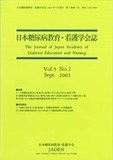Japanese
English
- 有料閲覧
- Abstract 文献概要
- 参考文献 Reference
- サイト内被引用 Cited by
本研究は,食事自己管理に対する自己効力と結果予期,食事自己管理行動との関係を明らかにし,さらに,Banduraの示す自己効力と結果予期の高さによる4パターンにおける属性と背景,食事自己管理行動の差異を明らかにすることを目的とした.2型糖尿病患者312名を対象とした自記式質問紙調査において食事自己管理に対する自己効力および結果予期,食事自己管理行動の項目に欠損値のなかった235名を分析対象とした(有効回答率75.3%).自己効力と結果予期は有意に関係しており,その関係は女性より男性においてより強かった.自己効力と結果予期,食事自己管理行動には,それぞれに有意な関係がみられたが,女性のみを対象とした結果予期と食事自己管理行動との間には関係がみられなかった.重回帰分析においては,自己効力(32.2%)が食事自己管理行動に最も影響を与えていたが,結果予期は0.2%とほとんど行動を予測しないという結果であった.自己効力と結果予期の高さの組み合わせによる4群における分析では,自己効力の高い2群は,結果予期の高さにかかわらず食事自己管理行動をよく行っていた.また,自己効力と結果予期がいずれも高い群では,決まった時間に食事をとり,規則的なリズムで生活し,家族と一緒に食事をとると同時に,家族と一部別または別メニューで食事をしている患者の比率が高いことが示された.
One of the purposes of the present study was to clarify the relationship among self-efficacy (SE) and outcome expectations (OE) to dietary self-management, and dietary self-management behavior (DSMB). The other one was to examine the differences in demographic (age, gender, job condition) and disease (duration of diabetes, regimen, complications) characteristics and DSMB among 4 combination patterns of SE and OE which Bandura has mentioned. 312 outpatients with Type 2 diabetes were asked to complete a self-administered questionnaire which include the scales of SE, OE, and DSMB on their routine clinical visit. Participants had to meet the following criteria: over 20 years of age, diagnosed as having Type 2 diabetes for a minimum of 1 year, and without medical or psychological conditions that would affect performance of diabetes self-care (e.g., blindness, dialysis, major stroke, alcoholics). Data of 235 (75.3%) subjects who completed the questionnaire was used. SE and OE were correlated, and it was stronger in male than in female. SE, OE, and DSMB were correlated respectively, but not between OE and DSMB in case of female. Multiple regression analysis revealed that SE was the strongest predictor of DSMB (32.2%), since OE had only 0.2%. It was indicated that the groups with higher SE had higher DSMB regardless of OE, and that the rate of the patients who answered they have constant daily life, meals on time, a meal with family, and different or partly different menu from family was significantly higher in the group with higher SE and OE.
Copyright © 2001, Japan Academy of Diabetes Education and Nursing. All rights reserved.


